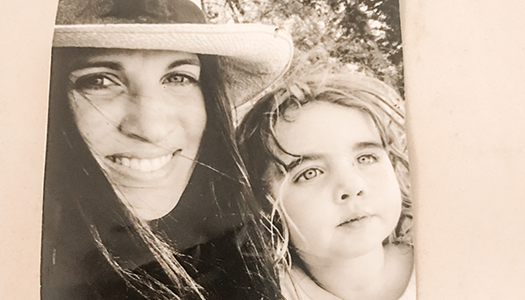Rare Humans

Just as I was starting the Capstone Project for my MA in Global Leadership, my 6-year-old daughter, Lexi, lost her life to a rare disease called Blau syndrome. 400 million people worldwide are living with a rare disease diagnosis, which is more than AIDS and cancer combined. 200 million are children and 30% will not live to see their fifth birthday (Global Genes, 2015). The term “rare” is a misnomer. Rare diseases are one of the leading causes of death in children and one of the greatest healthcare crises we face, yet the majority of people are unaware that they exist.
It was a difficult decision to complete my MA after Lexi’s sudden and unexpected death. We all have different ways of dealing with grief and I found out quickly that my coping strategy was to turn my pain into purpose. My supervisor’s advice was to pick a project that would get me out of bed in the morning and that is what I did. To honour Lexi’s memory and to raise awareness of the struggles of rare disease families, I chose to produce a documentary film. RARE HUMANS- Turning Hope into Action follows eight North American families and their journeys with a rare disease diagnosis. These parents have started patient organizations and are changing the future of medicine, as they pursue their missions to cure the incurable.
It was an honour to interview these inspiring parents, as well as leading rare disease experts including Dr. Ronald Cohn (CEO, SickKids Hospital), renowned Californian geneticist Dr. Donald Kohn (UCLA), Dr. Durhane Wong-Rieger (President & CEO at Canadian Organization for Rare Disorders and Dr. Anne Pariser (NIH Director). We discussed how rare disease patient groups are advancing research and revolutionizing the treatment for both rare diseases as well as common diseases. 80% of rare diseases are genetic in nature (Global Genes, 2015) and gene therapy offers a potential cure for so many diseases. Some of the families interviewed have already taken part in gene therapy trials and others are just months away from developing their own gene therapies.
The intention of this capstone and documentary film was to serve as a catalyst for systemic change that will lead to better outcomes for rare disease patients. In addition, it is a call to action for the general public to advocate for policy change and to support the research objectives of rare disease patient organizations through funding, volunteering and spreading awareness.
The global rare disease community needs a unified voice to advocate for policy change. Cancer provides an exemplary model for the rare disease community to follow. In the film, Dr. Pariser mentions that cancer is really hundreds, likely thousands, of diseases, yet they identify as one community. As she says, there is no “s” at the end of cancer. In 1948, Dr. Sidney Farber, the father of modern chemotherapy, realized that a poster child was needed to promote unified support for dealing with the numerous types of childhood cancer. This initiative changed the profile of cancer and dramatically improved funding. Nearly fifty years later, this approach could serve the rare disease community.
For most people, a rare diagnosis is a life sentence with no hope offered. Lexi is one of millions of children whose deaths could have been prevented with better awareness and understanding. Rare Humans is a story of love, loss and determination and it proves that every one of us has the ability to turn hope into action.
For a trailer of the film, visit this link. You can view the full documentary here.
Global Genes (2015) Rare facts.